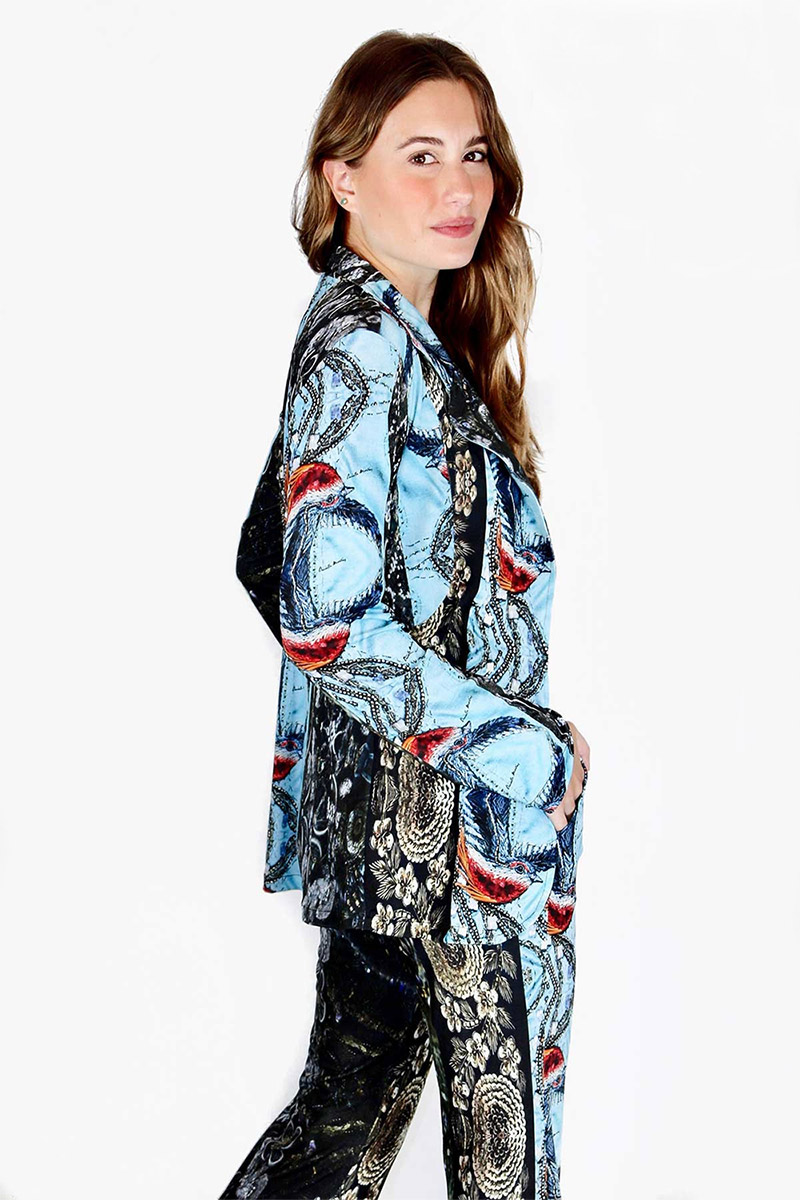Bio

Era 1999, e Daniella tinha trazido na bagagem de uma viagem à Londres tecidos para montar o enxoval do 2o filho. Durante a gravidez teve a ideia de juntar as sobras dos tecidos do enxoval com aviamentos, bordados e rendas para produzir o primeiro produto da marca, bolsas feitas a mão, que rapidamente conquistaram o coração das cariocas.
Das bolsas para as roupas foi um pulo… Dani, como é conhecida, passou a produzir peças feitas artesanalmente.
Super criativa, tudo que passa pelo dia a dia da designer pode se transformar em uma nova idéia e foi assim que das peças bordadas em algodão, Daniella criou sua primeira estampa.
A percepção de que faltava no mercado um produto prático, leve, que as mulheres pudessem usar em todos os momentos do dia a dia e também nos eventos mais festivos fez a estilista escolher o jérsei para imprimir suas estampas exclusivas.
Como tudo na vida de Daniella é feito com muita paixão, o casamento com o jérsei estampado segue sem monotonia num universo sempre colorido e como ela vive dizendo “tudo junto e misturado”. Sem medo de misturar cores, Dani transforma as estampas impressas no jérsei em vestidos, blusas, calças, saias e muito mais.
Com um estilo único, uma pegada romântica, com toques do barroco, as peças são criadas pela designer e produzidas junto de sua equipe de costureiras, todas moradoras da mesma comunidade no Rio de Janeiro.
Em 2008 a estilista inaugurou o Ateliê Daniella Martins, num prédio super charmoso da Rua Dias Ferreira, no bairro do Leblon no Rio de Janeiro, e logo o espaço se transformou em referência no circuito de moda conceitual carioca.
Também em 2008 a revista Veja Rio elegeu Daniella como profissional de destaque no Rio de Janeiro no segmento de Moda.
It was 1999, and Daniella’s luggage from a trip to London, carried fabrics to make the layette for her second baby boy.During her pregnancy, she had the idea to use the materials that were remaining, combining them with trims, embroidery and lace, thus creating the brand’s first product: handmade bags. They very soon became a success, and captured the hearts of “cariocas”.
From handbags to clothes was a short step… Better known as Dani, she started producing pieces made by hand.
As a super creative designer, her daily experiences always serve as inspiration . That’s how from embroidered pieces, came her first printed fabric.
The perception that the market lacked practical lightweight clothing that women could wear at any time of the day, as well as in different types of events , made the stylist be captivated by jersey material.
Everything in Daniella’s life is done with a lot of passion, and the combination with printed jersey is never monotonous, always vivid in a colorful universe of what she describes as “tudo junto e misturado”: everything mixed together . She doesn´t hesitate to mix colors, turning printed jersey fabrics into dresses, blouses, pants, skirts, and other garments.
With a unique style, a baroque and romantic touch, the pieces are created by the designer and produced with her team of seamstresses, all living in the same needy community in Rio de Janeiro.
Daniella is a born entrepreneur, very connected, and charismatic. She has always thought about her business as her lifestyle.
“Atelier Daniella Martins” opened in 2008 in a very charming building on Dias Ferreira Street, in Leblon neighborhood, a reference in the conceptual fashion in Rio. It’s the place where she receives her clients, friends, and partners, always welcoming them with open arms, a beautiful smile , in affectionate and joyful gatherings.
Also in 2008, Veja Rio Magazine, elected Daniella as a Rio outstanding professional in the fashion industry segment.
Before the concept of sustainability was largely debated, she had already taken the issue seriously, when she started her career producing handbags with the pieces of cloth that had not been used.
In 2010 she devised a philanthropic organization, now in its 10th year, giving aid to 26 needy institutions .
During the pandemic she started making masks with what was remaining from her fabrics ,and all the money from the sales went to the purchase and distribution of basic grocery products to the poor community where her seamstresses live.
